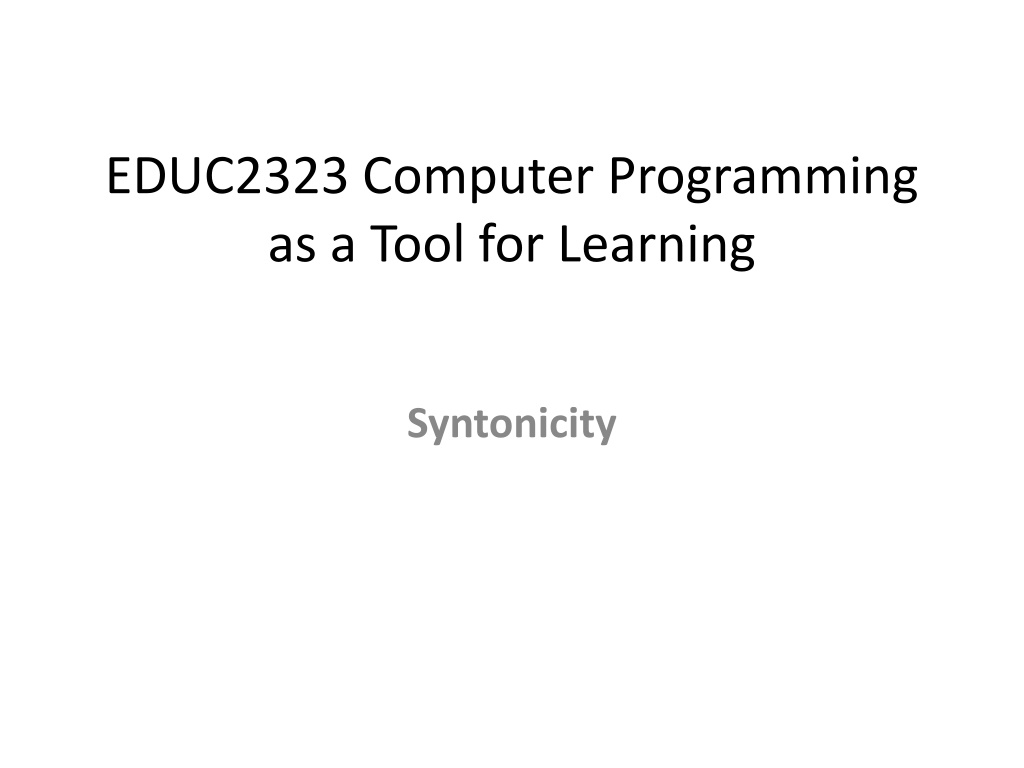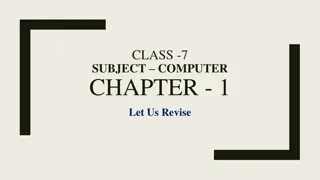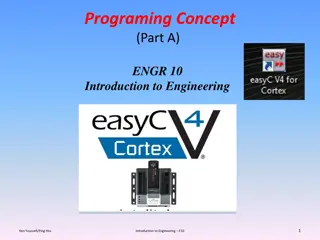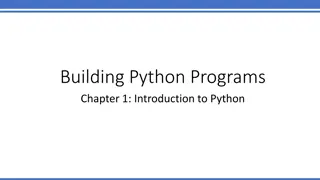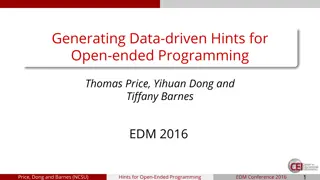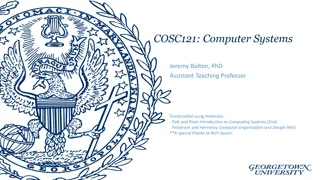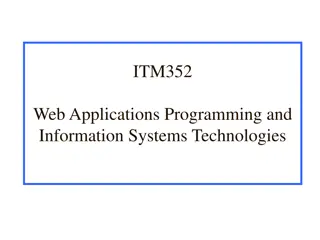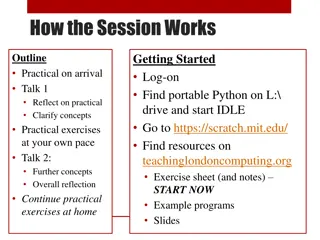Understanding Syntonic Learning in Computer Programming Education
Syntonic learning, introduced by Seymour Papert, focuses on harmony between fundamental ideas and beliefs. It contrasts with dissociated learning, emphasizing coherence with personal intentions. The concept, illustrated by the Logo Turtle incident, promotes engagement and meaningful interaction in educational tasks. By finding the "sweet spot" of task difficulty, learners can be more effectively engaged and motivated. Syntonicity in instructional design aims to create a beneficial learning experience by aligning content with the learner's personal aspects.
Download Presentation

Please find below an Image/Link to download the presentation.
The content on the website is provided AS IS for your information and personal use only. It may not be sold, licensed, or shared on other websites without obtaining consent from the author. Download presentation by click this link. If you encounter any issues during the download, it is possible that the publisher has removed the file from their server.
E N D
Presentation Transcript
EDUC2323 Computer Programming as a Tool for Learning Syntonicity
Syntonic Learning May be difficult to understand at first Introduced by Seymour Papert in Mindstorms Borrowed from Sigmund Freud s idea of ego syntonic When a person is ego syntonic they are in harmony with their fundamental ideas and beliefs The root of the word syntonic basically means in harmony
Logo Turtle The Turtle circle incident illustrates syntonic learning. This term is borrowed from clinical psychology and can be contrasted to the dissociated learning already discussed. Sometimes the term is used with qualifiers that refer to kinds of syntonicity. For example, the Turtle circle is body syntonic in that the circle is firmly related to children's sense and knowledge about their own bodies. Or it is ego syntonic in that it is coherent with children's sense of themselves as people with intentions, goals, desires, likes, and dislikes. A child who draws a Turtle circle wants to draw the circle; doing it produces pride and excitement.
Syntonicity and Constructivism The zone of proximal development defines functions that have not matured yet, but are in a process of maturing, that will mature tomorrow, that are currently in an embryonic state; these functions could be called the buds of development, the flowers of development, rather than the fruits of development, that is, what is only just maturing (Vygotsky, 1978).
Finding the Sweet Spot If we create a learning experience that is too hard to work with, too hard to understand then the learner is likely to give up in frustration If the task it too easy or too boring then the learner is likely to get bored and give up Get the level of the task and the design of the task right it will become a beneficial learning experience Syntonicity is one way of approaching system / instructional design such that the user / learner engages with the content in a more meaningful fashion.
A form of Metaphor Scratch as an example Syntonic learning runs a bit deeper than a metaphor in that it relates to some personal aspect of the learner
Take a Break Take a look at the blog Post by Uttam (2016) linked on the module web site What other types of syntonicity can you identify? According to the blog author, how does Scratch extend or challenge the ideas of syntonicity that were associated by the older educational programming language Logo?
Types of Syntonicity Computers and programming can be very abstract and mathematical Doing something in the real world that we do in the computer helps engagement Body physical self Ego experience and feelings, relevant to self Cultural values, social, cultural
Body Syntonicity in Scratch Case studies of Year 6 pupils using Scratch in 3 primary schools by Julia Briggs, Primary Education Technology Advisor, Somerset County Council. A pair of girls discovered ways to move and turn their character around the screen. Their enjoyment was clear and also their willingness to have a go to see what might happen. A pair of boys became fascinated by the movements they caused, He s circling, he s going sideways because he s a crab. Papert s (1984) description of the turtle in logo programming, as being body syntonic, was echoed by the children who explored the use of programming blocks to create movements for sprites. [ The] pair of girls giggled as their actions caused the character to turn or move off the stage. [The] pair of boys was proud of their crab which moved sideways round a circle. (p9)
So What? Questions related to Zombie Island
Who is it aimed at? The target group and age range are never specified for this sample program, but at what point does the program as it stands start to become inappropriate? At what age do Zombies have some sort of resonance with children? Might a sport metaphor be better e.g. running or football? It assumes a certain level of geekyness
Finally, what if we changed the graphics? Like so
